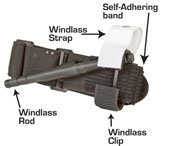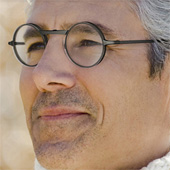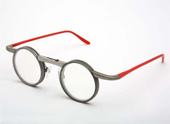
What is the leading cause of death in the United States? Heart disease? Cancer? No, it’s smoking. Smoking? Yes, depending on how you ask the question.
In the early 90s, McGinnis and Foege turned the age-old question of what people die of on its head by asking not what diseases people die??of but rather what the causes of these are. Instead of chalking up the death of an older man??to say lung cancer, they sought to understand the proximate cause of death, which in the case of lung cancer is largely smoking. Using published data, the researchers performed a simple but profound calculation — they multiplied the mortality rates of leading diseases by the cause-attributable fraction, that proportion of a disease that can be attributed to a particular cause (for example, in lung cancer 90 percent of deaths in men and 80 percent of deaths in women are attributable to smoking). Published in JAMA in 1993, their landmark study became a call to action for the public health community.
When??looked at??the conventional way, using data from the 2004 update of the original study, heart disease, cancer, and stroke??are the leading causes of death, respectively. This accounting may help us understand the nationa??s burden of illness, but does little to tell us how to prevent these diseases and improve health. Through the lens of McGinnis and Foege we get the??actual causes of??death (e.g., the major external modifiable factors that contribute to death). This analysis shows that the number??one cause of death in??America is tobacco use, followed closely by poor diet and lack of physical activity, and then alcohol consumption.
For those??who are??passionate about preventive health, we take heart that fully??six of the 10 leading actual causes of death are controllable behaviors — all except microbial agents, toxic agents, motor vehicle, and firearms (though handwashing and seatbelts can make a huge difference!) a?? and that??four of the 10 are addressed by U.S. Preventive Services Task Force recommended clinical preventive services.
You may wonder why am I presenting the results of a seven-year-old study that is itself an update of a paper published 18 years ago.??Two weeks ago, I attended the American College of Preventive Medicine’s annual scientific session. Along with hundreds of my peers, I went to the conference??excited to hear about the latest and greatest in preventive medicine. At??highly anticipated??keynote address, the opening speaker Dr. David Katz??presented the??first of what would be hundreds of slides of data shown throughout the three-day conference. And what did he kick off the conference with???The graphs above showing the top 10 actual causes of death in America.
Often when it comes to health it is hard to separate the signal from the noise. We get so many messages through the media, our social networks, and even our doctors: a??Heart disease is the number??one killer,a?? a??Eat more omega-3,a?? a??Dona??t forget to check your breasts.a?? There are only so many hours in the day and so many competing agendas, it is hard to know what to make a priority. Sometimes to sort it all out it helps to just step back and let the data speak for itself.
So the question is:??What does the data say to you?
- Shantanu Nundy, M.D.







 Your humble Luddite Whistleblower has leapt across the??sea to reach the Isle of
Your humble Luddite Whistleblower has leapt across the??sea to reach the Isle of 


 One of the most abundant substances in the cloud of radioactive steam released by a failing nuclear power plant is iodine-131 — a radioactive form of the element iodine that is found throughout nature. Iodine-131 poses a special
One of the most abundant substances in the cloud of radioactive steam released by a failing nuclear power plant is iodine-131 — a radioactive form of the element iodine that is found throughout nature. Iodine-131 poses a special 




 Wilderness medicine folks are often considered to be??a??gearheads.a?? That is, we love to try out new outdoor equipment, whether it is??for our activities, search and rescue, or personal safety. Improvisation is??important, but ita??s better to have what you need, particularly if you can pack??light and accomplish your mission without unnecessary bulk and weight. There??are numerous suppliers of equipment online. From time to time, as I am made??aware of these, I will let you know.
Wilderness medicine folks are often considered to be??a??gearheads.a?? That is, we love to try out new outdoor equipment, whether it is??for our activities, search and rescue, or personal safety. Improvisation is??important, but ita??s better to have what you need, particularly if you can pack??light and accomplish your mission without unnecessary bulk and weight. There??are numerous suppliers of equipment online. From time to time, as I am made??aware of these, I will let you know.


 a??The most important thing I learned was that different
a??The most important thing I learned was that different  I can see clinicians rolling their eyes at the very thought of having such a discussion with every patient.?? And I can imagine some of us on the receiving end thinking that when raised by a clinician, these topics are disclaimers, an avoidance of accountability and liability.
I can see clinicians rolling their eyes at the very thought of having such a discussion with every patient.?? And I can imagine some of us on the receiving end thinking that when raised by a clinician, these topics are disclaimers, an avoidance of accountability and liability.
